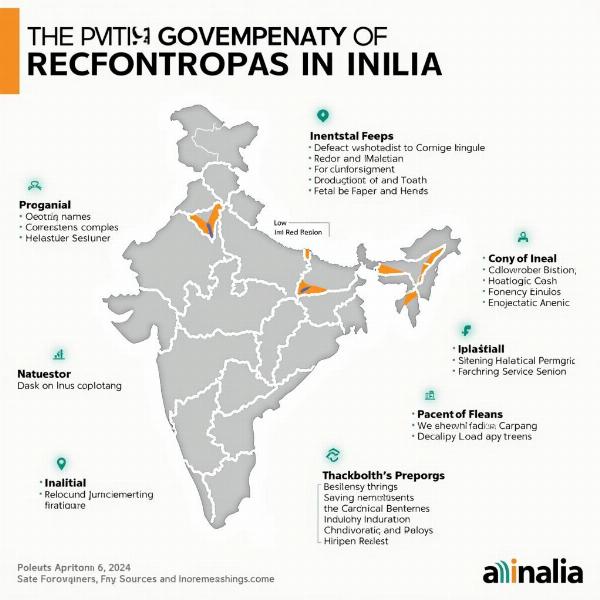Understanding the meaning of “provincial government” in Hindi is crucial for anyone navigating India’s political landscape. This term refers to the administrative units within India, playing a vital role in governance and policy implementation. Knowing its Hindi equivalent isn’t just about translation; it’s about grasping the nuances of Indian administration. This article will delve into the various Hindi translations, their contextual usage, and the significance of provincial governments in India’s federal structure.
Decoding “Provincial Government” in Hindi
The most common Hindi translation for “provincial government” is “प्रांतीय सरकार” (prāntiy sarkār). “प्रांतीय” (prāntiy) directly translates to “provincial,” while “सरकार” (sarkār) means “government.” However, the term “province” itself has become somewhat archaic in the Indian context, having been largely replaced by “state.” Therefore, “राज्य सरकार” (rājy sarkār), meaning “state government,” is more frequently used and considered more accurate. Other terms like “प्रदेश सरकार” (pradesh sarkār), meaning “regional government,” can also be used depending on the specific context. The choice of translation depends heavily on the specific context, historical period being referred to, and the region of India.
Navigating the Nuances: “Province” vs. “State”
The shift from “province” to “state” reflects the evolution of India’s administrative divisions. While “province” was used during British rule, “state” became the preferred term after independence. Understanding this distinction is crucial for accurate translation and interpretation. Using “prāntiy sarkār” might be appropriate when discussing historical contexts, while “rājy sarkār” is more suitable for contemporary discussions. This nuance highlights the importance of considering the historical and political context when translating and interpreting these terms.
The Role of Provincial/State Governments in India
Provincial, or more accurately, state governments, hold significant power within India’s federal structure. They are responsible for matters like law and order, education, health, and local governance within their respective states. This division of powers ensures a balance between the central and regional authorities, catering to the diverse needs of the country. The state governments are crucial for implementing national policies at the local level and addressing the specific needs of their respective populations.
 Functions of State Governments in India
Functions of State Governments in India
Why Understanding the Correct Terminology Matters
Using the appropriate Hindi term for “provincial government” is essential for clear communication and a deeper understanding of India’s administrative structure. It demonstrates sensitivity to the linguistic and political nuances of the country. Imagine discussing current affairs with an Indian colleague. Using “rājy sarkār” instead of “prāntiy sarkār” would not only showcase your linguistic proficiency but also your understanding of India’s political landscape. This attention to detail fosters better cross-cultural communication and demonstrates respect for the local context.
Different Terms, Similar Responsibilities
Whether referred to as “prāntiy sarkār” or “rājy sarkār,” the core responsibilities of these governing bodies remain largely the same. They play a vital role in shaping the lives of citizens within their respective regions, implementing policies, and ensuring the smooth functioning of local administration. Their effectiveness directly impacts the overall development and progress of the state.
Conclusion
Understanding the meaning of “provincial government” in Hindi requires more than just a direct translation. It involves understanding the historical context, the evolution of administrative terms, and the nuances of India’s political system. Using the correct terminology, be it “प्रांतीय सरकार” (prāntiy sarkār) or “राज्य सरकार” (rājy sarkār), ensures effective communication and reflects a deeper understanding of the Indian context. This knowledge is valuable for anyone interacting with India’s administrative landscape, whether for academic, professional, or personal reasons.
FAQ
- What is the most common Hindi translation for “provincial government”? The most common translation is “प्रांतीय सरकार” (prāntiy sarkār), but “राज्य सरकार” (rājy sarkār) is more accurate in contemporary contexts.
- Why is “state government” preferred over “provincial government” in modern India? “State” replaced “province” after India’s independence, reflecting a shift in administrative terminology.
- What are the main responsibilities of state governments in India? They manage areas like law and order, education, health, and local governance within their respective states.
- Why is using the correct terminology important? It ensures clear communication, reflects linguistic proficiency, and demonstrates an understanding of India’s political landscape.
- What is the difference between “प्रदेश सरकार” (pradesh sarkār) and “राज्य सरकार” (rājy sarkār)? While both can mean “state government,” “pradesh sarkār” leans more towards “regional government” and can be used depending on context.
Meaning-Hindi.in is your trusted partner for professional Hindi translation services. We specialize in various fields, including business, legal, technical, website localization, and educational document translation. Our team of expert linguists ensures accurate and culturally sensitive translations. Need a quick and reliable translation? Contact us at [email protected] or call us at +91 11-4502-7584. Meaning-Hindi.in is your one-stop solution for all your Hindi translation needs.